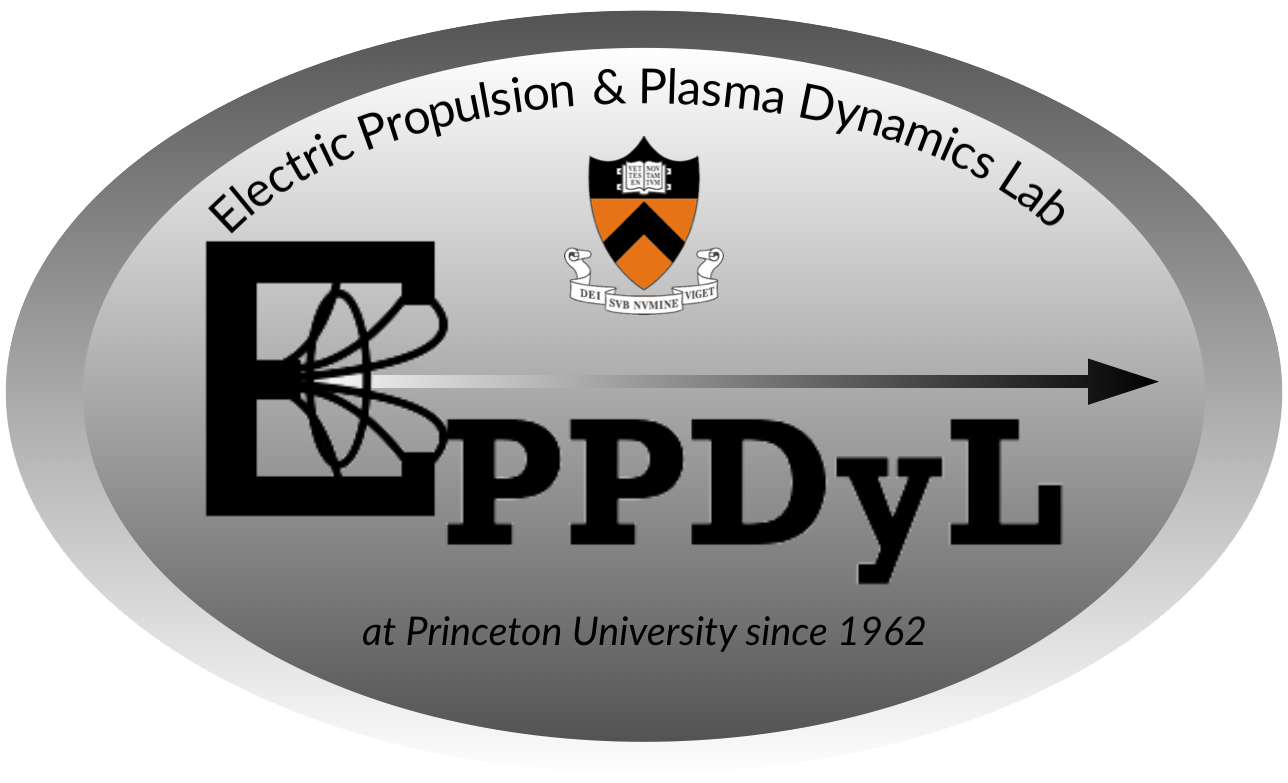Pulsed Plasma Thruster Discharge Initiation Project
Overview
This project focuses on finding a more efficient way to initiate a discharge in a Gas-Fed Pulsed Plasma Thruster (GFPPT). Normally spark plugs are used, usually with four arranged around the circumference of a coaxial thruster or otherwise spaced in a parallel plate thruster. Sparkplugs have their problems and limitations. They erode very quickly and are the life-limiting components of the thruster. In addition, they introduce azimuthal nonuniformities in the current sheets they produce, especially if the sparkplugs don’t fire at exactly the same time. These nonuniformites can lead to a loss of efficiency in accelerating the plasma. Sparkplugs initiate gas discharges by providing a large supply of free electrons to start an avalanche. Another way to produce electrons, however, is to draw them out of the cathode. Using a laser, it is possible to heat a backplate fixed to the cathode such that significant thermionic current is released but no cathode erosion occurs. In addition to increasing the lifetime of the thruster, this approach has the advantage that the laser can be made to impinge with equal intensity upon the entire backplate area, creating an even distribution of electrons and theoretically a perfectly uniform current sheet. It is the purpose of this research to validate the feasibility of this approach and to understand and describe the physics behind it.
Accomplishments
Laser-induced discharges have been observed for electrodes of various materials using a coaxial thruster geometry.
We have designed an optical system that employs two conical lenses to deliver collimated annular pulses of laser light to the backplate of that coaxial thruster.
Work is underway to employ that optical system to initiate discharges and form current sheets of the fully assembled device and compare performance with sparkplug initiation.
Relevant Publications
- IR-Assisted Discharge Initiation in Pulsed Plasma Thrusters - 38th AIAA/ASME/SAE/ASEE Joint Propulsion Conference (2002)
- Laser Discharge Initiation for Gas-fed Pulsed Plasma Thrusters - 37th AIAA/ASME/SAE/ASEE Joint Propulsion Conference (2001)
- Effects of Ignition on Discharge Symmetry in Gas-Fed Pulsed Plasma Thrusters - 34th AIAA/ASME/SAE/ASEE Joint Propulsion Conference (1998)
Contact
Former students:- Jack Berkery
- Jimmy Cooley
- John Ziemer
- Tom Markusic
